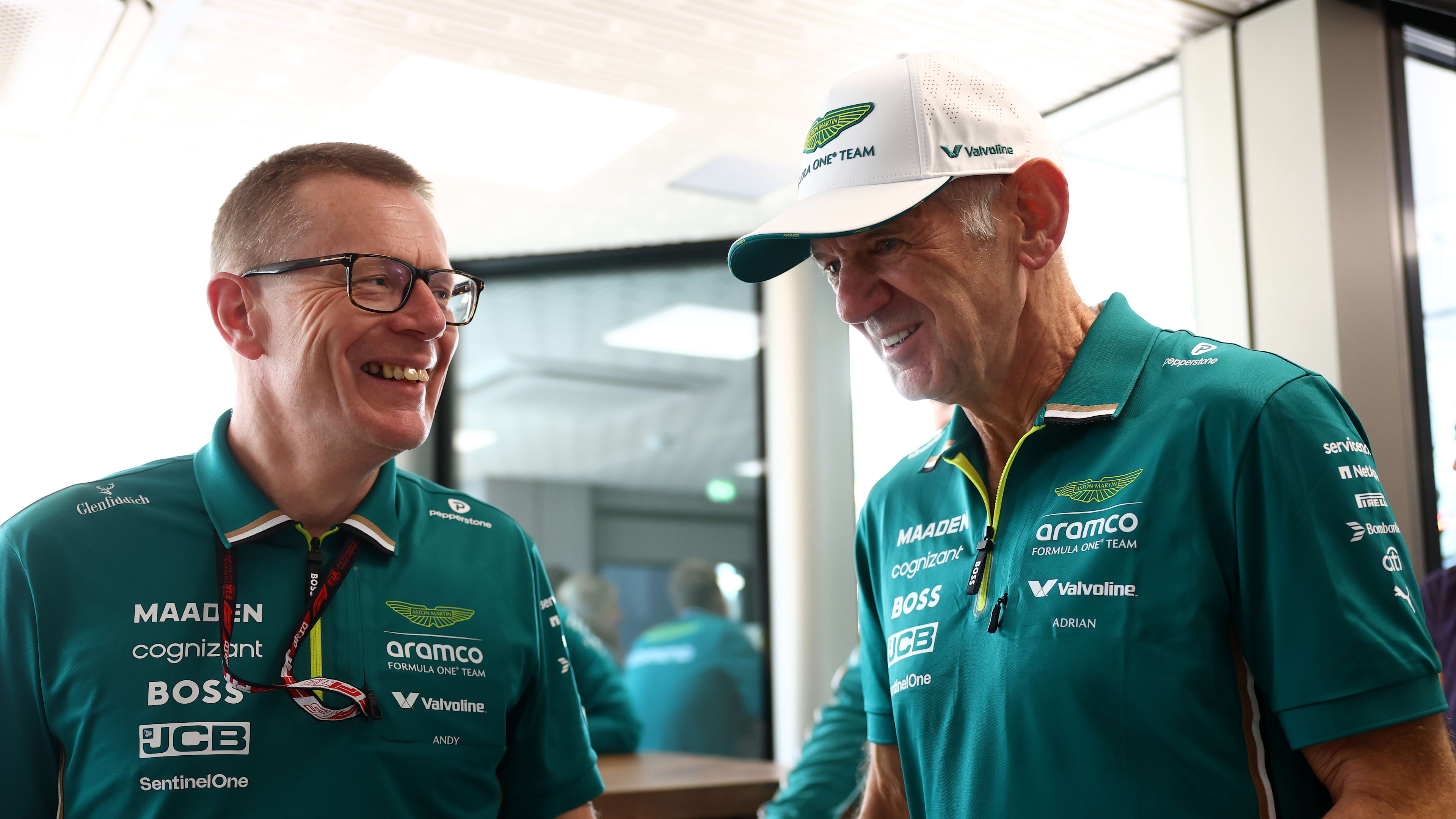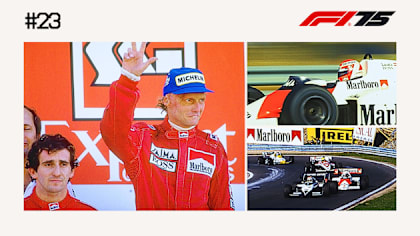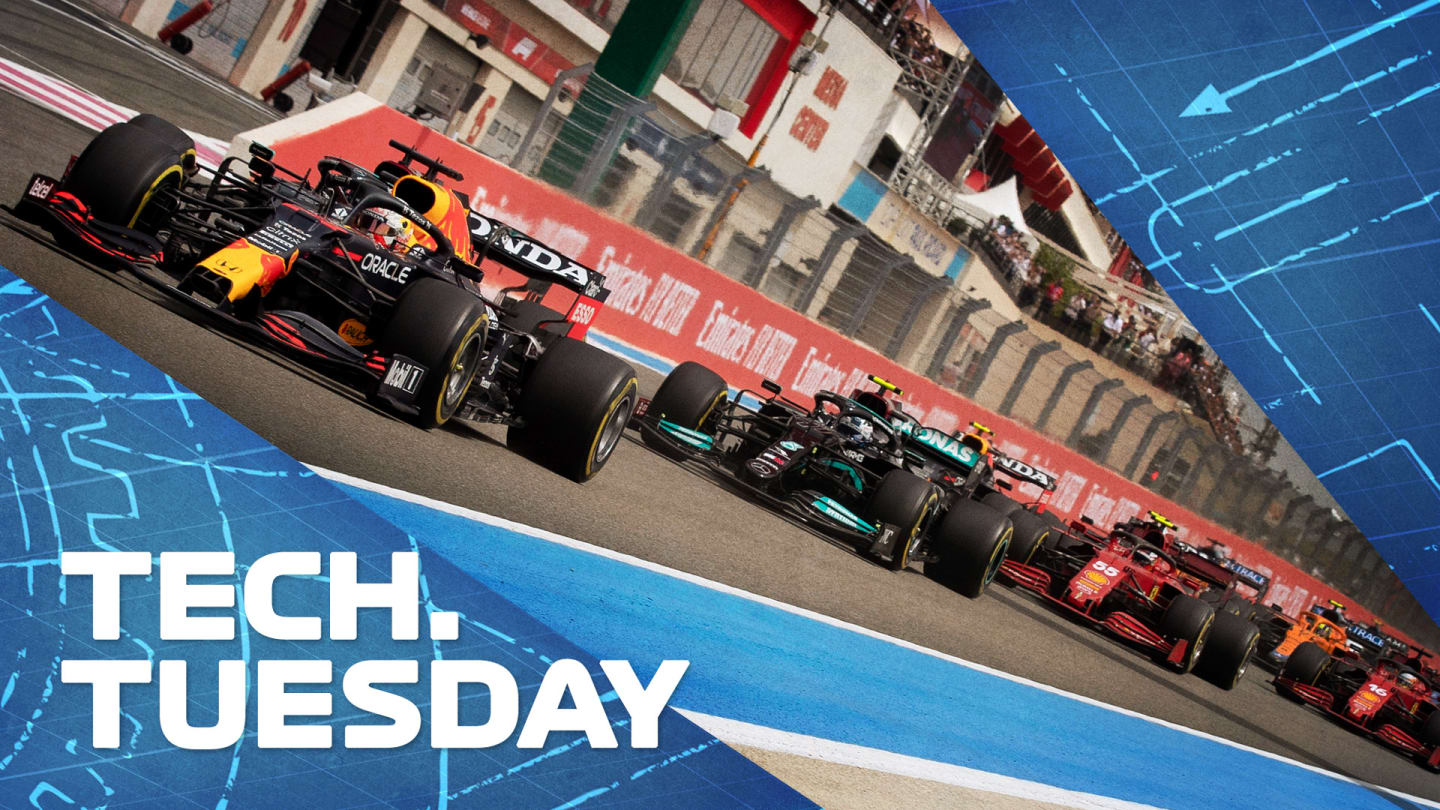
30 May - 01 June
Technical
TECH TUESDAY: The most ingenious solutions to the 2021 rules changes we’ve seen so far

Share

F1's big new rules change was postponed until 2022 in the wake of the Covid-19 pandemic, but that didn't mean the innovation stopped. In this week's Tech Tuesday, Mark Hughes looks at the most ingenious ways teams such as Mercedes and Red Bull tweaked their 2020 cars around the 2021 regulations, with technical illustrations from Giorgio Piola.
This season was supposed to be the low-cost final year of this iteration of F1, a technical format extended by a year before the all-new aero regulations come in, with stringent restrictions on which parts of the car could not be changed. The idea was a one-year extension of the life of the existing cars, given the economic challenges caused by the pandemic.
Yet despite all that, and the first implementation of the cost cap, typical F1 ingenuity has found a way to innovate regardless. It was maybe helped in this by the concurrent regulation aero tweaks made in the interests of containing downforce increases.
Cutting the floor area, banning the floor slots and louvres and restricting the size of diffuser strakes and brake duct winglets gave the teams something to work on. Clawing back the performance which had been taken away became the objective – as well as striving to cut the gap to Mercedes for all the others.

As the illustration shows, for 2021 the floor area was reduced, and the floor slots and louvres were banned
So we have seen several new features for the first time this year despite the restrictions of homologation, costs and retention of existing monocoques. No matter what restrictions are put in place, F1 adapts.
In their initial designs Red Bull, Ferrari and Alpine all found ways of emulating Mercedes’ innovation of sweeping back the rear suspension to give more space around the diffuser for the aerodynamicists to exploit. This was despite the token system restricting how such changes could be made.
Existing pick-up points were retained but reconfigured for different uses to achieve much the same effect as on the 2020 Mercedes, which had been created without such restrictions.
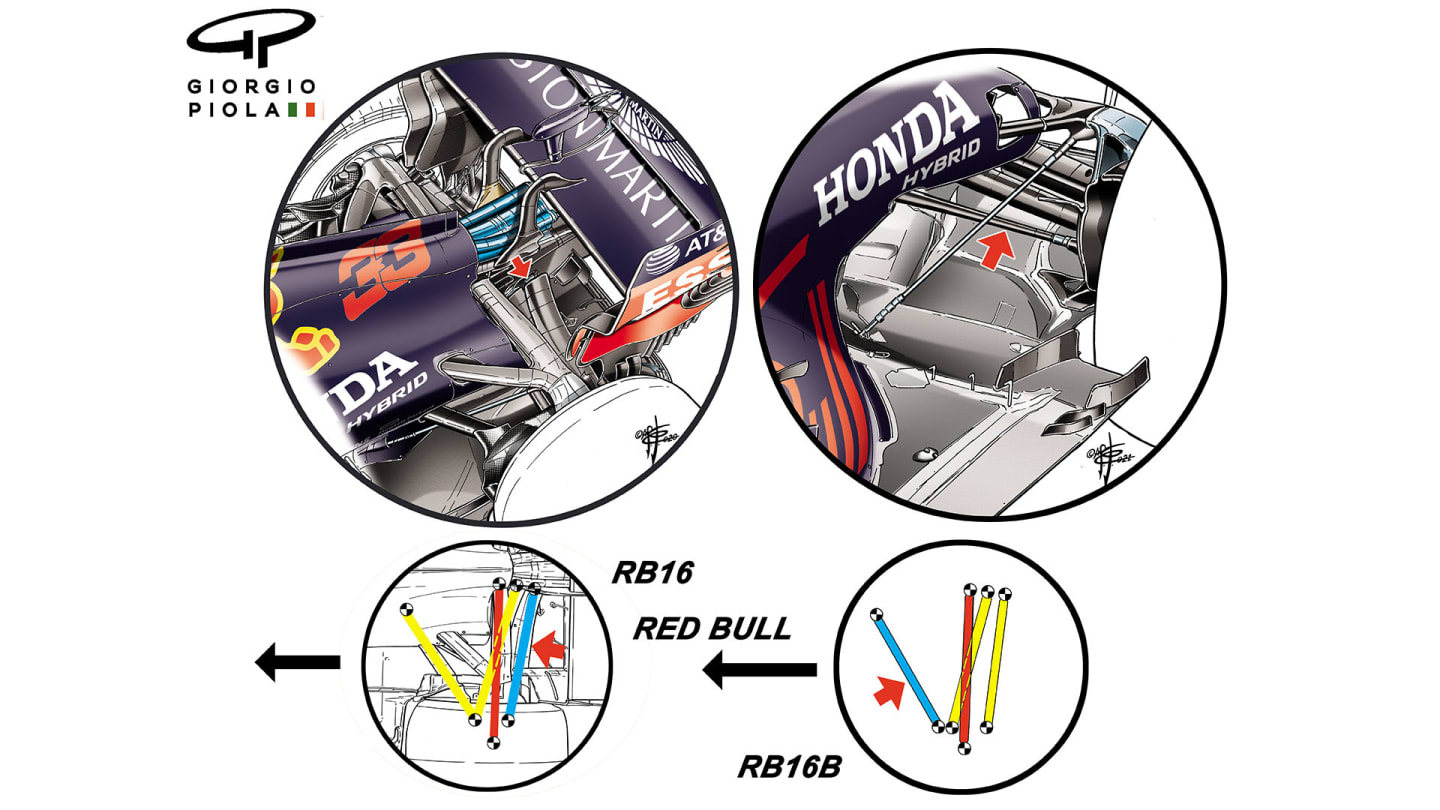
The differing rear suspension approaches of the 2020-spec Red Bull in the top left circle, and the 2021-spec RB16B in the top right
Then there were the unique development features. The cutting away of the floor edges and banning of their slots generated many different workarounds to recreate the spinning vortices of air at the edge of the floor’s underside which aerodynamically seal it, allowing it to create the negative pressure which pulls the car into the track.
Mercedes tried, first of all, with a series of wavy undulations on the underside of the floor. These were then replaced at Silverstone by a more intricate arrangement where the undulations were smoothed out, but a double longitudinal flap did the job of tripping the air into vortices (below).
READ MORE: Mercedes' last big 2021 upgrade that helped Hamilton to Silverstone victory
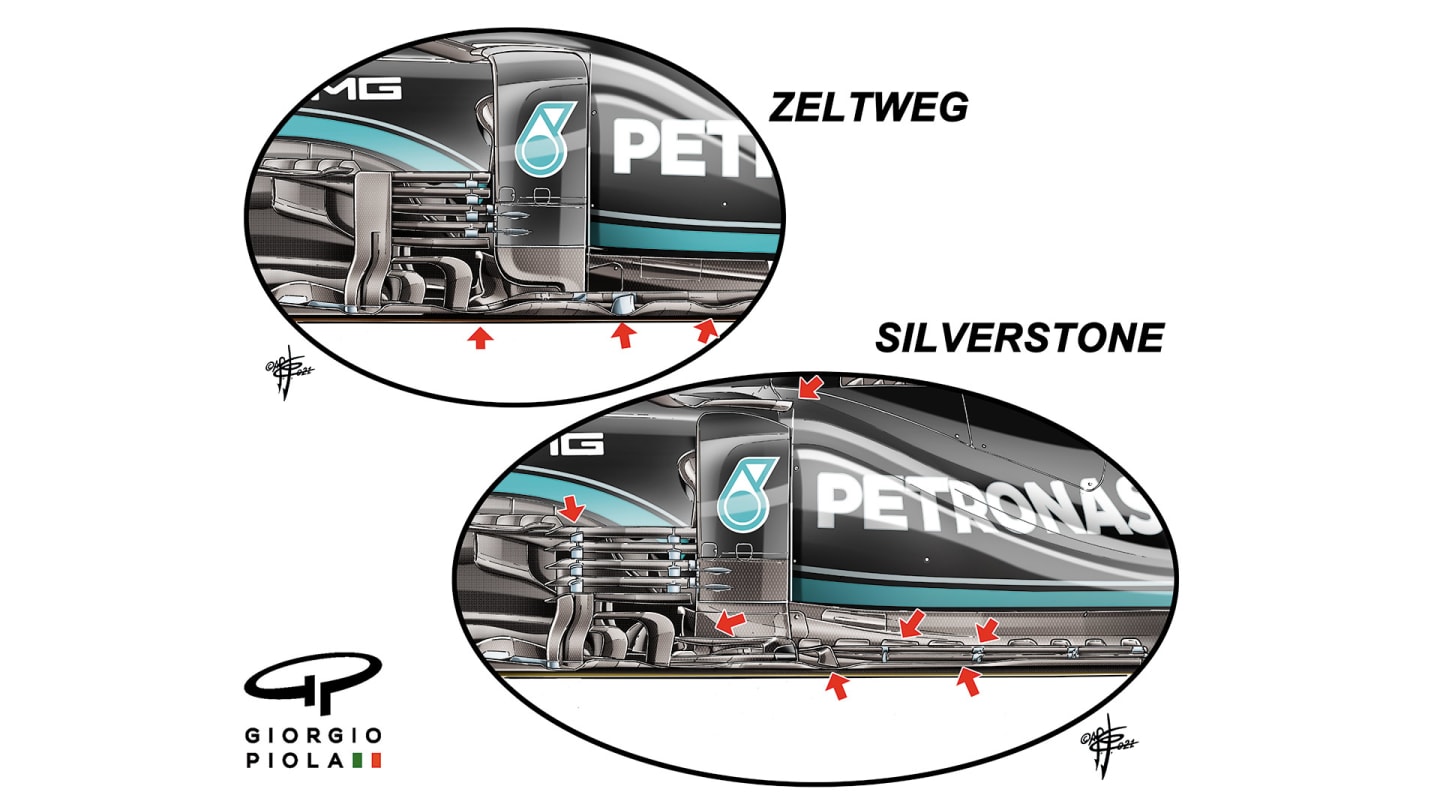
Mercedes' reprofiled bargeboard area from Austria (Top) to Silverstone (Bottom)
The Z-floor – featuring a Z-shaped cut-out in the floor’s edge to trip the air and curl the resultant vortices beneath the outer edge of the floor – became standardised elsewhere.
READ MORE: What is the ‘Z-shaped’ floor solution – and why are more and more teams using it?
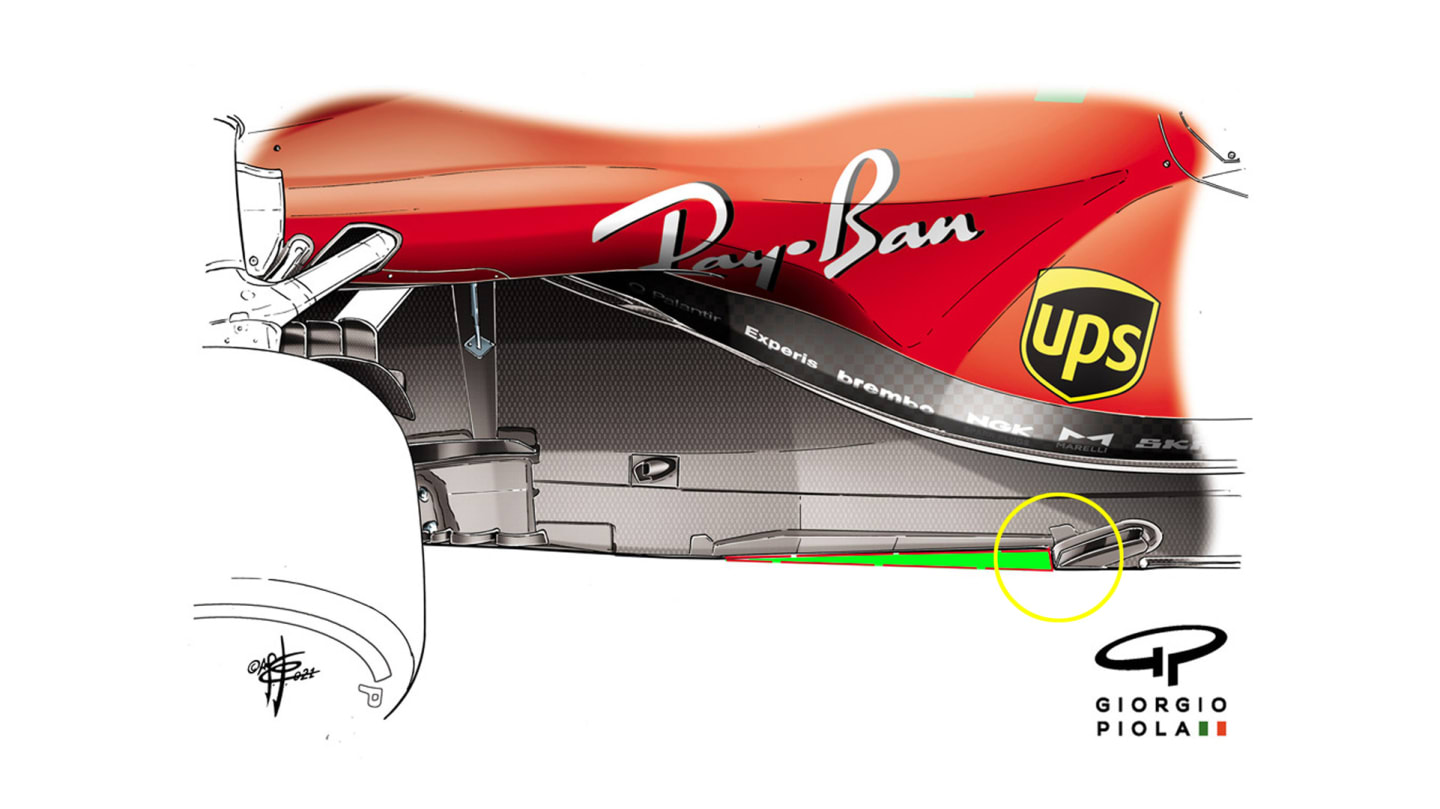
Above is the Ferrari floor with the 'Z shape' cutout circled, and highlighted in green is the unused space allowed by the 2021 regulations
In practice at Monaco the Red Bull appeared with shark teeth-like serrations around the trailing edge of the diffuser. These were further developed in subsequent races and by the time of the Austrian Grand Prix Max Verstappen’s car featured the teeth across the full width of the diffuser’s trailing edge.
That edge featured a gurney flap to channel the air over the top of the diffuser in a way which helps the array of tiny vortices created by the shark teeth to keep the airflow energised at higher ride heights than previously, allowing the car to run a greater degree of rake angle.
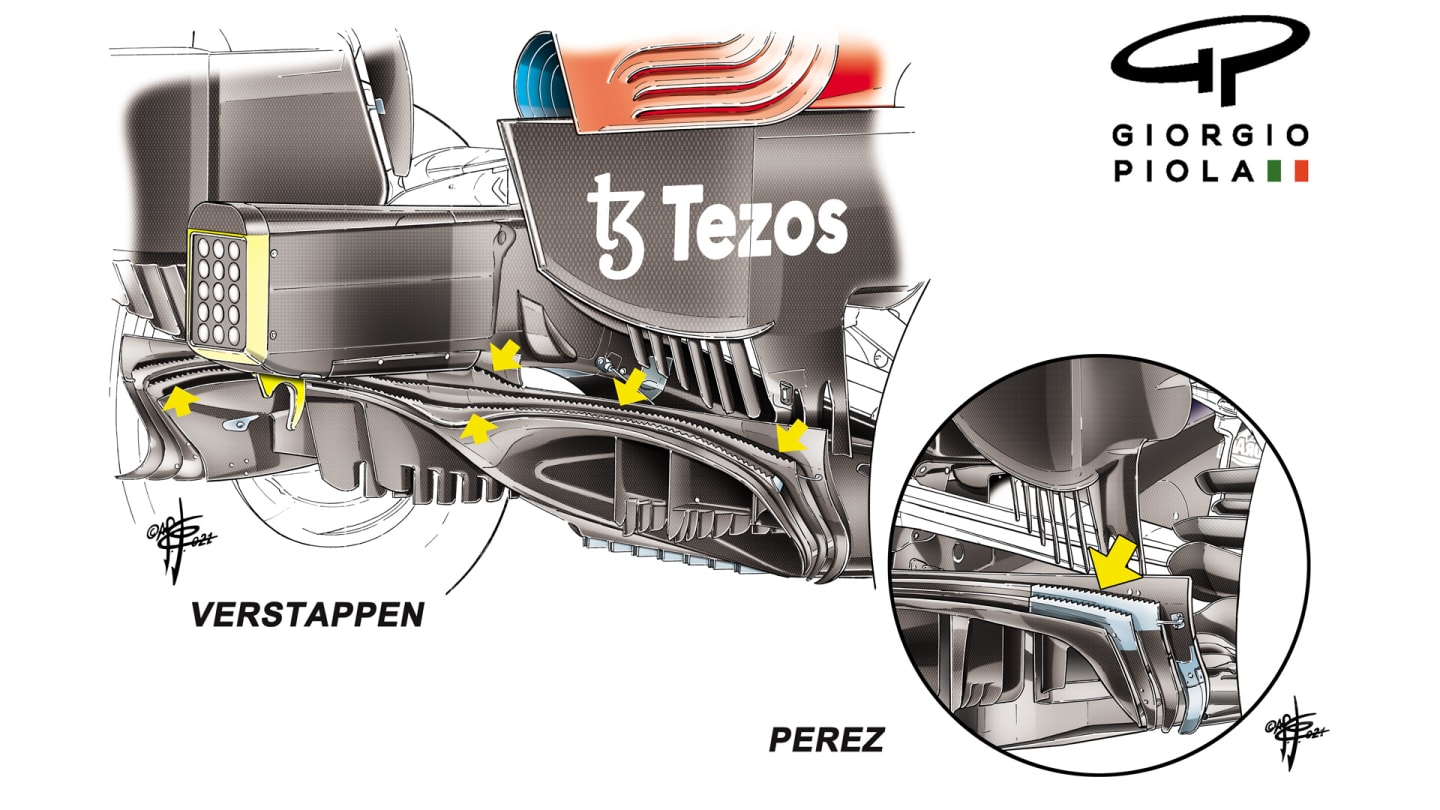
The shark teeth serrations along Red Bull's diffuser. Verstappen ran an updated rear diffuser in Styria, with Perez still running the older spec part.
Ferrari, constrained by the token system into retaining their unfashionable wide nose, found a new way of accelerating the air in the ‘dead zone’ which wide noses tend to create on the underside.

The Ferrari has a unique double cape arrangement beneath the nose, the upper cape turning the air towards the bargeboards, the lower one (highlighted in yellow) helping accelerate the flow directly to the underfloor.
An additional cape mounted beneath the main one was used to channel the air in that zone and accelerate it towards the underfloor.
New restrictions just mean new solutions in F1. The ideas can’t be stopped.
READ MORE: How Ferrari cleverly re-engineered their mediocre 2020 car into the much quicker SF21
YOU MIGHT ALSO LIKE
FeatureF1 Unlocked PADDOCK INSIDER: Norris’ Monaco win breathed new life into the title fight – can he back that up in Spain?
FeatureF1 Unlocked GREATEST RACES #23: An F1 title decided by just half a point – 1984 Portuguese Grand Prix
Podcast BEYOND THE GRID: Meet Simone Resta, the F1 designer who swapped Ferrari for Mercedes
Feature 5 must-see moments from the new 'F1: The Academy' Netflix show
